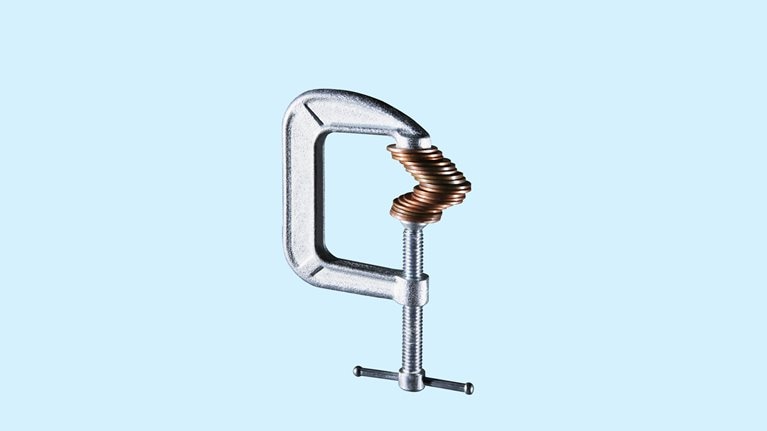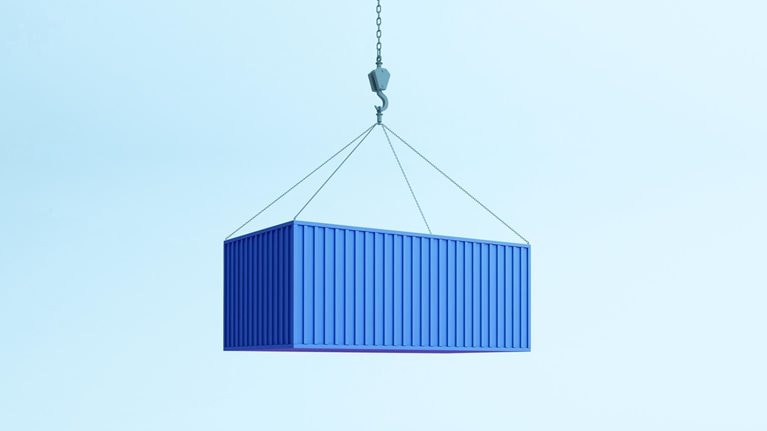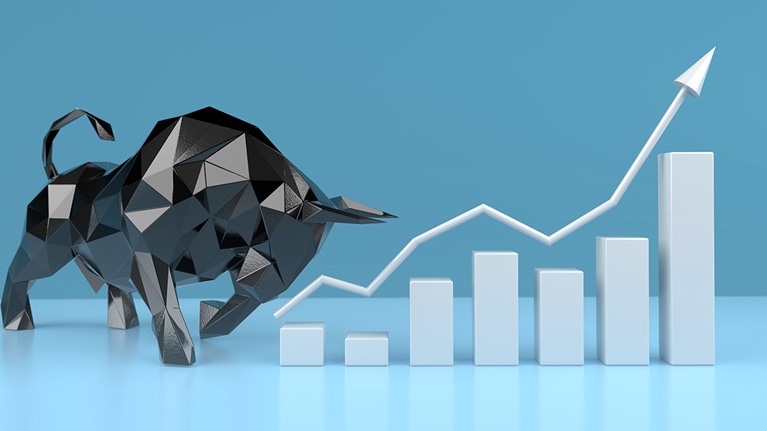
Inflation has been top of mind for many over the past few years. But how long will it persist? In June 2022, inflation in the United States jumped to 9.1 percent, reaching the highest level since February 1982. The inflation rate has since slowed in the United States, as well as in Europe, Japan, and the United Kingdom, particularly in the final months of 2023. But even though global inflation is higher than it was before the COVID-19 pandemic, when it hovered around 2 percent, it’s receding to historical levels. In fact, by late 2022, investors were predicting that long-term inflation would settle around a modest 2.5 percent. That’s a far cry from fears that long-term inflation would mimic trends of the 1970s and early 1980s—when inflation exceeded 10 percent.
Get to know and directly engage with senior McKinsey experts on inflation.
Ondrej Burkacky is a senior partner in McKinsey’s Munich office, Axel Karlsson is a senior partner in the Stockholm office, Fernando Perez is a senior partner in the Miami office, Emily Reasor is a senior partner in the Denver office, and Daniel Swan is a senior partner in the Stamford, Connecticut, office.
Inflation refers to a broad rise in the prices of goods and services across the economy over time, eroding purchasing power for both consumers and businesses. Economic theory and practice, observed for many years and across many countries, shows that long-lasting periods of inflation are caused in large part by what’s known as an easy monetary policy. In other words, when a country’s central bank sets the interest rate too low or increases money growth too rapidly, inflation goes up. As a result, your dollar (or whatever currency you use) will not go as far today as it did yesterday. For example: in 1970, the average cup of coffee in the United States cost 25 cents; by 2019, it had climbed to $1.59. So for $5, you would have been able to buy about three cups of coffee in 2019, versus 20 cups in 1970. That’s inflation, and it isn’t limited to price spikes for any single item or service; it refers to increases in prices across a sector, such as retail or automotive—and, ultimately, a country’s economy.
How does inflation affect your daily life? You’ve probably seen high rates of inflation reflected in your bills—from groceries to utilities to even higher mortgage payments. Executives and corporate leaders have had to reckon with the effects of inflation too, figuring out how to protect margins while paying more for raw materials.
But inflation isn’t all bad. In a healthy economy, annual inflation is typically in the range of two percentage points, which is what economists consider a sign of pricing stability. When inflation is in this range, it can have positive effects: it can stimulate spending and thus spur demand and productivity when the economy is slowing down and needs a boost. But when inflation begins to surpass wage growth, it can be a warning sign of a struggling economy.

Introducing McKinsey Explainers: Direct answers to complex questions
Inflation may be declining in many markets, but there’s still uncertainty ahead: without a significant surge in productivity, Western economies may be headed for a period of sustained inflation or major economic reset, as Japan has experienced in the first decades of the 21st century.
What does seem to be changing are leaders’ attitudes. According to the 2023 year-end McKinsey Global Survey on economic conditions, respondents reported less fear about inflation as a risk to global and domestic economic growth. But this sentiment varies significantly by region: European respondents were most concerned about the effects of inflation, whereas respondents in North America offered brighter views.
What causes inflation?
Monetary policy is a critical driver of inflation over the long term. The current high rate of inflation is a result of increased money supply, high raw materials costs, labor mismatches, and supply disruptions—exacerbated by geopolitical conflict.
In general, there are two primary types, or causes, of short-term inflation:
- Demand-pull inflation occurs when the demand for goods and services in the economy exceeds the economy’s ability to produce them. For example, when demand for new cars recovered more quickly than anticipated from its sharp dip at the beginning of the COVID-19 pandemic, an intervening shortage in the supply of semiconductors made it hard for the automotive industry to keep up with this renewed demand. The subsequent shortage of new vehicles resulted in a spike in prices for new and used cars.
- Cost-push inflation occurs when the rising price of input goods and services increases the price of final goods and services. For example, commodity prices spiked sharply during the pandemic as a result of radical shifts in demand, buying patterns, cost to serve, and perceived value across sectors and value chains. To offset inflation and minimize impact on financial performance, industrial companies were forced to increase prices for end consumers.
Learn more about McKinsey’s Growth, Marketing & Sales Practice.
What are some periods in history with high inflation?
Economists frequently compare the current inflationary period with the post–World War II era, when price controls, supply problems, and extraordinary demand in the United States fueled double-digit inflation gains—peaking at 20 percent in 1947—before subsiding at the end of the decade. Consumption patterns today have been similarly distorted, and supply chains have been disrupted by the pandemic.
The period from the mid-1960s through the early 1980s in the United States, sometimes called the “Great Inflation,” saw some of the country’s highest rates of inflation, with a peak of 14.8 percent in 1980. To combat this inflation, the Federal Reserve raised interest rates to nearly 20 percent. Some economists attribute this episode partially to monetary policy mistakes rather than to other causes, such as high oil prices. The Great Inflation signaled the need for public trust in the Federal Reserve’s ability to lessen inflationary pressures.
Inflation isn’t solely a modern-day phenomenon, of course. One very early example of inflation comes from Roman times, from around 200 to 300 CE. Roman leaders were struggling to fund an army big enough to deal with attackers from multiple fronts. To help, they watered down the silver in their coinage, causing the value of money to slowly fall—and inflation to pick up. This led merchants to raise their prices, causing widespread panic. In response, the emperor Diocletian issued what’s now known as the Edict on Maximum Prices, a series of price and wage controls designed to stop the rise of prices and wages (one helpful control was a maximum price for a male lion). But because the edict didn’t address the root cause of inflation—the impure silver coin—it didn’t fix the problem.
How is inflation measured?
Statistical agencies measure inflation first by determining the current value of a “basket” of various goods and services consumed by households, referred to as a price index. To calculate the rate of inflation over time, statisticians compare the value of the index over one period with that of another. Comparing one month with another gives a monthly rate of inflation, and comparing from year to year gives an annual rate of inflation.
In the United States, the Bureau of Labor Statistics publishes its Consumer Price Index (CPI), which measures the cost of items that urban consumers buy out of pocket. The CPI is broken down by region and is reported for the country as a whole. The Personal Consumption Expenditures (PCE) price index—published by the US Bureau of Economic Analysis—takes into account a broader range of consumer spending, including on healthcare. It is also weighted by data acquired through business surveys.
How does inflation affect consumers and companies differently?
Inflation affects consumers most directly, but businesses can also feel the impact:
- Consumers lose purchasing power when the prices of items they buy, such as food, utilities, and gasoline, increase. This can lead to household belt-tightening and growing pessimism about the economy.
- Companies lose purchasing power and risk seeing their margins decline, when prices increase for inputs used in production. These can include raw materials like coal and crude oil, intermediate products such as flour and steel, and finished machinery. In response, companies typically raise the prices of their products or services to offset inflation, meaning consumers absorb these price increases. The challenge for many companies is to strike the right balance between raising prices to cover input cost increases while simultaneously ensuring that they don’t raise prices so much that they suppress demand.
How can organizations respond to high inflation?
During periods of high inflation, companies typically pay more for materials, which decreases their margins. One way for companies to offset losses and maintain margins is by raising prices for consumers. However, if price increases are not executed thoughtfully, companies can damage customer relationships and depress sales—ultimately eroding the profits they were trying to protect.
When done successfully, recovering the cost of inflation for a given product can strengthen relationships and overall margins. There are five steps companies can take to ADAPT (adjust, develop, accelerate, plan, and track) to inflation:
- Adjust discounting and promotions and maximize nonprice levers. This can include lengthening production schedules or adding surcharges and delivery fees for rush or low-volume orders.
- Develop the art and science of price change. Instead of making across-the-board price changes, tailor pricing actions to account for inflation exposure, customer willingness to pay, and product attributes.
- Accelerate decision making tenfold. Establish an “inflation council” that includes dedicated cross-functional, inflation-focused decision makers who can act quickly and nimbly on customer feedback.
- Plan options beyond pricing to reduce costs. Use “value engineering” to reimagine a portfolio and provide cost-reducing alternatives to price increases.
- Track execution relentlessly. Create a central supporting team to address revenue leakage and to manage performance rigorously. Traditional performance metrics can be less reliable when inflation is high.
Beyond pricing, a variety of commercial and technical levers can help companies deal with price increases in an inflationary market, but other sectors may require a more tailored response to pricing.
Learn more about our Financial Services, Industrials & Electronics, Operations, Strategy & Corporate Finance, and Growth, Marketing & Sales Practices.
How can CEOs help protect their organizations against uncertainty during periods of high inflation?
In today’s uncertain environment, in which organizations have a much wider range of stakeholders, leaders must think about performance beyond short-term profitability. CEOs should lead with the complete business cycle and their complete slate of stakeholders in mind.
CEOs need an inflation management playbook, just as central bankers do. Here are some important areas to keep in mind while scripting it:
- Design. Leaders should motivate their organizations to raise the profile of design to a C-suite topic. Design choices for products and services are critical for responding to price volatility, scarcity of components, and higher production and servicing costs.
- Supply chain. The most difficult task for CEOs may be convincing investors to accept supply chain resiliency as the new table stakes. Given geopolitical and economic realities, supply chain resiliency has become a crucial goal for supply chain leaders, alongside cost optimization.
- Procurement. CEOs who empower their procurement organizations can raise the bar on value-creating contributions. Procurement leaders have told us time and again that the current market environment is the toughest they’ve experienced in decades. CEOs are beginning to recognize that purchasing leaders can be strategic partners by expanding their focus beyond cost cutting to value creation.
- Feedback. A CEO can take a lead role in playing back the feedback the organization is hearing. In today’s tight labor market, CEOs should guide their companies to take a new approach to talent, focusing on compensation, cultural factors, and psychological safety.
- Pricing. Forging new pricing relationships with customers will test CEOs in their role as the “ultimate integrator.” Repricing during inflationary times is typically unpleasant for companies and customers alike. With setting new prices, CEOs have the opportunity to forge deeper relationships with customers, by turning to promotions, personalization, and refreshed communications around value.
- Agility. CEOs can strive to achieve a focus based more on strategic action and less on firefighting. Managing the implications of inflation calls for a cross-functional, disciplined, and agile response.
A practical example: How is inflation affecting the US healthcare industry?
Consumer prices for healthcare have rarely risen faster than the rate of inflation—but that’s what’s happening today. The impact of inflation on the broader economy has caused healthcare costs to rise faster than the rate of inflation. Experts also expect continued labor shortages in healthcare—gaps of up to 450,000 registered nurses and 80,000 doctors—even as demand for services continues to rise. This drives up consumer prices and means that higher inflation could persist. McKinsey analysis as of 2022 predicted that the annual US health expenditure is likely to be $370 billion higher by 2027 because of inflation.
This climate of risk could spur healthcare leaders to address productivity, using tech levers to boost productivity while also reducing costs. In order to weather the storm, leaders will need to quickly set high aspirations, align their organizations around them, and execute with speed.
What is deflation?
If inflation is one extreme of the pricing spectrum, deflation is the other. Deflation occurs when the overall level of prices in an economy declines and the purchasing power of currency increases. It can be driven by growth in productivity and the abundance of goods and services, by a decrease in demand, or by a decline in the supply of money and credit.
Generally, moderate deflation positively affects consumers’ pocketbooks, as they can purchase more with less money. However, deflation can be a sign of a weakening economy, leading to recessions and depressions. While inflation reduces purchasing power, it also reduces the value of debt. During a period of deflation, on the other hand, debt becomes more expensive. And for consumers, investments such as stocks, corporate bonds, and real estate become riskier.
A recent period of deflation in the United States was the Great Recession, between 2007 and 2008. In December 2008, more than half of executives surveyed by McKinsey expected deflation in their countries, and 44 percent expected to decrease the size of their workforces.
When taken to their extremes, both inflation and deflation can have significant negative effects on consumers, businesses, and investors.
For more in-depth exploration of these topics, see McKinsey’s Operations Insights collection. Learn more about Operations consulting, and check out operations-related job opportunities if you’re interested in working at McKinsey.
Articles referenced:
- “Investing in productivity growth,” March 27, 2024, Jan Mischke, Chris Bradley, Marc Canal, Olivia White, Sven Smit, and Denitsa Georgieva
- “Economic conditions outlook during turbulent times, December 2023,” December 20, 2023
- “Forward Thinking on why we ignore inflation—from ancient times to the present—at our peril with Stephen King,” November 1, 2023
- “Procurement 2023: Ten CPO actions to defy the toughest challenges,” March 6, 2023, Roman Belotserkovskiy, Carolina Mazuera, Marta Mussacaleca, Marc Sommerer, and Jan Vandaele
- “Why you can’t tread water when inflation is persistently high,” February 2, 2023, Marc Goedhart and Rosen Kotsev
- “Markets versus textbooks: Calculating today’s cost of equity,” January 24, 2023, Vartika Gupta, David Kohn, Tim Koller, and Werner Rehm
- “Inflation-weary Americans are increasingly pessimistic about the economy,” December 13, 2022, Gonzalo Charro, Andre Dua, Kweilin Ellingrud, Ryan Luby, and Sarah Pemberton
- “Inflation fighter and value creator: Procurement’s best-kept secret,” October 31, 2022, Roman Belotserkovskiy, Ezra Greenberg, Daphne Luchtenberg, and Marta Mussacaleca
- “Prime Numbers: Rethink performance metrics when inflation is high,” October 28, 2022, Vartika Gupta, David Kohn, Tim Koller, and Werner Rehm
- “The gathering storm: The threat to employee healthcare benefits,” October 20, 2022, Aditya Gupta, Akshay Kapur, Monisha Machado-Pereira, and Shubham Singhal
- “Utility procurement: Ready to meet new market challenges,” October 7, 2022, Roman Belotserkovskiy, Abhay Prasanna, and Anton Stetsenko
- “The gathering storm: The transformative impact of inflation on the healthcare sector,” September 19, 2022, Addie Fleron, Aneesh Krishna, and Shubham Singhal
- “Pricing during inflation: Active management can preserve sustainable value,” August 19, 2022, Niels Adler and Nicolas Magnette
- “Navigating inflation: A new playbook for CEOs,” April 14, 2022, Asutosh Padhi, Sven Smit, Ezra Greenberg, and Roman Belotserkovskiy
- “How business operations can respond to price increases: A CEO guide,” March 11, 2022, Andreas Behrendt, Axel Karlsson, Tarek Kasah, and Daniel Swan
- “Five ways to ADAPT pricing to inflation,” February 25, 2022, Alex Abdelnour, Eric Bykowsky, Jesse Nading, Emily Reasor, and Ankit Sood
- “How COVID-19 is reshaping supply chains,” November 23, 2021, Knut Alicke, Ed Barriball, and Vera Trautwein
- “Navigating the labor mismatch in US logistics and supply chains,” December 10, 2021, Dilip Bhattacharjee, Felipe Bustamante, Andrew Curley, and Fernando Perez
- “Coping with the auto-semiconductor shortage: Strategies for success,” May 27, 2021, Ondrej Burkacky, Stephanie Lingemann, and Klaus Pototzky
This article was updated in April 2024; it was originally published in August 2022.



